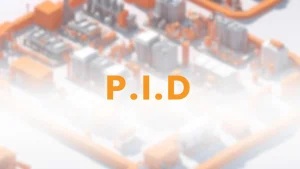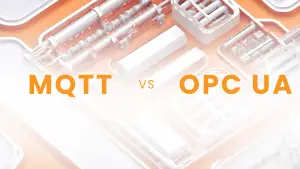Are you preparing for an Industrial Automation Engineering Job , To help you better prepare we put together a List of 50 Interview Questions with their appropriate answers :
Question 1: What is Industrial Automation?
Answer : Industrial Automation involves delegating human control functions to technical equipment to increase productivity, improve quality, reduce costs, and enhance safety.
Question 2: What are the main components used in automation?
Answer : Key components include sensors (e.g., RTDs, thermocouples), transmitters, control systems (PLC, DCS, PID controllers), and output devices/actuators like drives and control valves.
Question 3: Can you explain a PID-based control system
Answer : A PID (Proportional-Integral-Derivative) controller uses a control loop feedback mechanism to maintain the desired output by minimizing the error between a setpoint and the process variable.
Question 4 : What are the types of industrial control systems?
Answer : The main types are Programmable Logic Controllers (PLCs), Distributed Control Systems (DCS), and Supervisory Control and Data Acquisition (SCADA).
Question 5 : What are the leading PLC providers ?
Answer : Prominent PLC manufacturers include Rockwell Automation (Allen Bradley), Siemens, Schneider Electric (Modicon), GE Fanuc, and Mitsubishi Electric.
Question 6 : What are the leading DCS providers?
Answer : Major DCS suppliers include Yokogawa (Centum series), Honeywell (Experion), Emerson (DeltaV), ABB (System 800xA), and Siemens (PCS 7).
Question 7 : What are the leading SCADA software Providers ?
Answer : Leading SCADA software providers include Wonderware (InTouch), Siemens (WinCC), Rockwell Automation (FactoryTalk View), and GE Digital (iFIX).
Question 8 : What is a distributed control system (DCS)?
Answer : A DCS is a control system where control and monitoring are distributed across interconnected controllers rather than centralized.
Question 9 : What is a ladder diagram in PLC programming?
Answer : A ladder diagram is a graphical programming language resembling electrical relay logic used to design PLC control systems.
Question 10 : What is the difference between analog and digital signals?
Answer : Analog signals represent continuous values, while digital signals represent discrete on/off or binary states.
Question 11 : What distinguishes a PLC from a relay?
Answer : PLCs are programmable and handle both analog and digital I/Os, allowing complex control and automation, whereas relays are hard-wired for specific functions and are less flexible.
Question 12 : How does a PLC differ from a DCS?
Answer : A PLC is typically used for discrete control with a focus on high-speed logic operations, while a DCS manages complex, large-scale continuous processes with distributed control and centralized monitoring.
Question 13 : What is a PC-based control system?
Answer : In PC-based control, a standard computer’s CPU acts as the processor, utilizing PCI cards for I/O connections, with RAM and hard disk serving as memory and storage, respectively.
Question 14 : What is the principle behind SCADA?
Answer : SCADA (Supervisory Control and Data Acquisition) systems monitor and control industrial processes by collecting real-time data from sensors and controllers, displaying it to operators, and allowing control actions.
Question 15 : What are the main features of SCADA systems?
Answer : SCADA systems provide data acquisition, process control, monitoring, data logging, real-time and historical trending, alarm handling, and remote access capabilities.
Question 16 : What is a servo motor, and how does it work?
Answer : A servo motor is a closed-loop motor that uses feedback to achieve precise control of angular or linear position, speed, and acceleration.
Question 17 : What is a stepper motor, and where is it used?
Answer : A stepper motor is an open-loop motor that rotates in discrete steps, commonly used in applications requiring precise position control like CNC machines and 3D printers.
Question 18 : What is an HMI, and what is its role?
Answer : Human-Machine Interface (HMI) is a user interface or dashboard that connects a person to a machine, system, or device, enabling monitoring and control of industrial processes.
Question 19 : Explain the term “redundancy” in automation.
Answer : Redundancy refers to duplicating critical components or functions to ensure system reliability and availability in case of failure.
Question 20 : What is the difference between on-off and proportional control?
Answer : On-off control toggles the output fully on or off based on a setpoint, while proportional control adjusts the output proportionally to the error magnitude.
Question 21 : How does Modbus communication work?
Answer : Modbus is a communication protocol that facilitates data exchange between devices, using a master-slave architecture over serial lines or TCP/IP.
Question 22 : What is the function of a variable frequency drive (VFD)?
Answer : A VFD controls the speed and torque of an electric motor by varying the motor’s input frequency and voltage.
Question 23 : What are safety PLCs, and when are they used?
Answer : Safety PLCs are designed for fail-safe operation in critical applications, ensuring safe shutdown and operation in the event of a fault.
Question 24 : What is the purpose of a control loop?
Answer : A control loop maintains a process variable at a desired setpoint by adjusting inputs based on feedback.
Question 25 : What are the different types of process variables?
Answer : Process variables include temperature, pressure, flow, level, and composition.
Question 26 : How do you troubleshoot a PLC system?
Answer : Steps include verifying power supply, checking I/O status, reviewing program logic, diagnosing communication issues, and analyzing error logs.
Question 27 : What is Ethernet/IP in industrial automation?
Answer : Ethernet/IP is an industrial protocol that uses standard Ethernet to communicate real-time data between industrial devices.
Question 28 : What is OPC UA, and why is it used?
Answer : OPC UA (Open Platform Communications Unified Architecture) is a protocol for secure, platform-independent industrial communication
Question 29 : How do you calibrate a transmitter?
Answer : Calibration involves applying known input values, adjusting the transmitter to produce accurate output readings, and verifying against standards.
Question 30 : What is the role of a process control engineer?
Answer : A process control engineer designs, implements, and maintains control systems to optimize industrial processes.
Question 31 : What is the difference between synchronous and asynchronous motors?
Answer : Synchronous motors run at a constant speed synchronized with the supply frequency, while asynchronous motors (induction motors) run at a speed slightly less than the synchronous speed.
Question 32 : What is the function of a relay in automation?
Answer : A relay is an electromechanical switch that opens or closes circuits based on electrical signals.
Question 33 : What is a signal conditioner?
Answer : A signal conditioner converts and standardizes signals from sensors for further processing by control systems.
Question 34 : What are the advantages of automation in industry?
Answer : Automation improves efficiency, consistency, productivity, safety, and quality while reducing costs and downtime.
Question 35 : What is the difference between hardwiring and software interlocks?
Answer : Hardwiring interlocks use physical circuits, while software interlocks are implemented in the control system program.
Question 36 : What is the purpose of alarm management in SCADA?
Answer : Alarm management ensures operators are alerted to critical conditions, helping prioritize actions and prevent process disruptions.
Question 37 : What are the common communication protocols in automation?
Answer : Common protocols include Modbus, Profibus, Ethernet/IP, OPC UA, and HART.
Question 38 : What is the importance of cybersecurity in industrial automation?
Answer : Cybersecurity protects industrial systems from unauthorized access, data breaches, and disruptions, ensuring safe and reliable operations.
Question 39 : Define an encoder and its function.
Answer : An encoder is a feedback device that converts mechanical motion into electronic signals, typically producing digital pulses corresponding to incremental angular motion.
Question 40 : What types of sensors are used for measuring different parameters?
Answer : Common sensors include temperature sensors (RTDs, thermocouples), pressure sensors (strain gauges, piezoelectric), flow sensors (turbine, ultrasonic), and level sensors (capacitive, ultrasonic).
Question 41 : What is a transmitter in industrial automation?
Answer : A transmitter converts sensor signals into standardized output signals (e.g., 4-20 mA) for communication with control systems.
Question 42 : Why is a 4-20 mA signal preferred over a 0-10 V signal?
Answer : The 4-20 mA current loop is less susceptible to signal loss over long distances and electrical noise, and the 4 mA baseline allows for easy detection of wiring issues like open circuits.
Question 43 : Explain the difference between 2-wire, 3-wire, and 4-wire transmitters.
Answer : 2-wire transmitters receive power and transmit signals over the same two wires; 3-wire transmitters have separate wires for power and signal; 4-wire transmitters use two wires for power and two for signal, offering better isolation and performance.
Question 44 : What is a “smart” transmitter?
Answer : A smart transmitter includes a microprocessor, enabling digital communication, remote configuration, and diagnostics, enhancing functionality beyond traditional analog transmitters.
Question 45 : Define Fieldbus in industrial automation.
Answer : Fieldbus is a digital communication protocol used in industrial automation systems to connect field devices like sensors and actuators to controllers, facilitating efficient data exchange.
Question 46 : What is an actuator, and what role does it play?
Answer : An actuator is a device that converts control signals into physical action, such as moving a valve or driving a motor, to influence a process variable.
Question 47 : How do RTDs work for temperature measurement?
Answer : Resistance Temperature Detectors (RTDs) measure temperature by correlating the resistance of the RTD element with temperature; resistance increases with rising temperature.
Question 48 : What temperature range do RTDs support?
Answer : RTDs typically measure temperatures ranging from -200°C to +600°C, depending on the specific type and construction.
Question 49 : Explain how thermocouples measure temperature.
Answer : Thermocouples consist of two dissimilar metal wires joined at one end; they generate a voltage proportional to the temperature difference between the joined end (hot junction) and the
Question 50 : What is an interlock in automation?
Answer : An interlock is a safety mechanism that prevents certain actions or sequences unless specific conditions are met.




